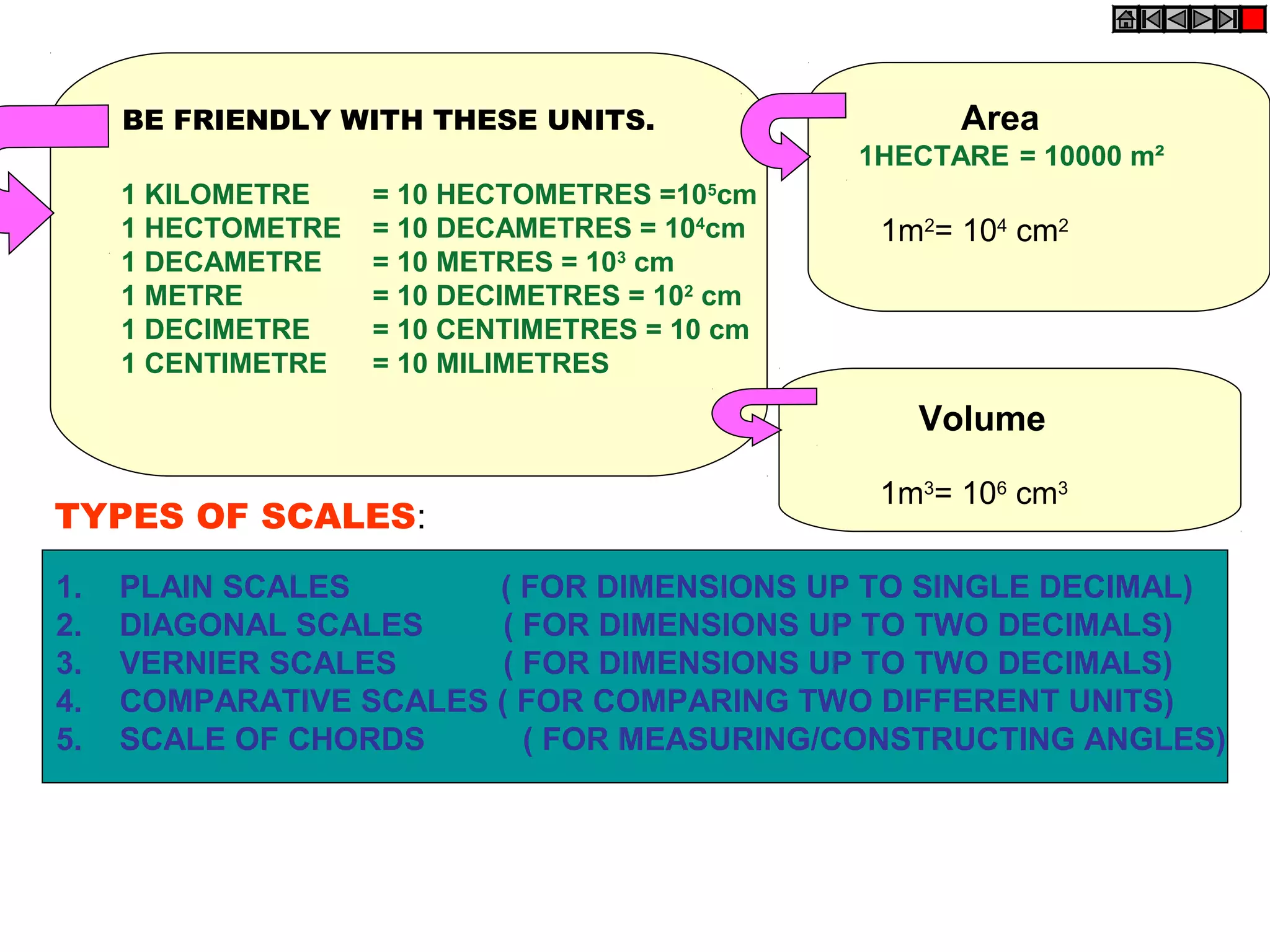1. Scales are used to reduce or enlarge dimensions of objects to fit on a standard drawing sheet. The ratio of reduction is called the representative fraction.
2. Reducing scales are used for large objects and enlarging scales for small objects. Full size scales have a ratio of 1:1.
3. Formulas are provided for calculating representative fractions for length, area, and volume scales.
4. Types of scales include plain, diagonal, vernier, comparative, and scale of chords scales. Plain scales show two units while diagonal scales show three successive units.




















